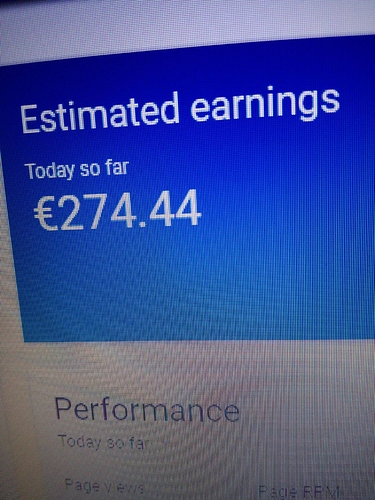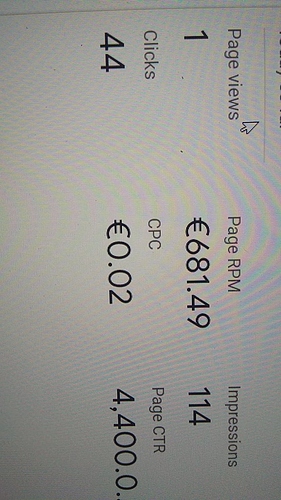Ne mogu da editujem i dodam da se vise ni ne moze dobiti adsense na blogspot ime primer nekoime.blogspot.com nego mora domen ime nekoime.com ili drugi.
ma svaka čast momci, znači da očekujemo teme kako kontaktirati fb ghostana mi stranica 
Wthck ? 
Who ? 
Why ? 
Ako je na prevaru google ce biti najjaci 
Ovo je slika od sinoc kad im je bio pao analytics pa nije preglede ucitavalo. inace je 1.50€ rpm
Zato je pagevievs 1 Impressions 114 clicks 44 a rpm 681.
Da nije bilo do njih ne bi bilo sumnjivo nista 
evo stiglo mi na mail
AD FRAUD IS A BIGGER PROBLEM THAN YOU THINK! BILLIONS ARE LOST EVERY YEAR!
Let’s try to make a bet, how much $$$ do you think fraudsters steal from online marketers every single year? Couple millions? Or 100s of millions? It’s WAY more, unfortunately. According to a recent report released by “Cheg”, a military-grade security company, up to $23 BILLION landed in the hands of online fraudsters in the past 12 months.
And it’s gonna get worse:
- $26 billion are expected to “get lost” in 2020
- It should further grow to $29 billion in 2021
- And $32 billion is the estimate for 2022
But that’s still not the total loss. The $23 billion figure for 2019 is just the direct economic loss. The study suggests that indirect economic and social costs, whatever that means, might increase the total to $30 billion. And that’s a HUGE pile of money, whichever way you look at this.
Let’s put the numbers into perspective a bit.
- The report operates with a total market value of $316 billion, which is an estimate of the global ad spend in 2019.
- $23 billion accounts for about 7.5% of the funds spent on online advertising globally.
To put it simply, 7.5% of all ads served in the online space never reach the human eyes. Bots, fake traffic, crawlers, and whatnot … that’s the sinkhole where all these impressions and clicks end in.
And it gets more interesting. There is a big difference between “high end” and “lower end” advertising channels. While the high-end platforms are subject to only 5% of ad fraud, it can go up to 50% or more in case of the low-end platforms and distribution channels.
Wondering what a high or low-end platform means in this context? Think aboutGoogle Ads or Facebook Ads, for example. These are high-end platforms and we can more or less count on them for sending us real visitors. But move intoPOPs, Push or even Native and the situation will change dramatically.
Every affiliate, including the STM & MRKTRS staff, can confirm the often ridiculously high % of BOT traffic we get sold by pretty much any POP network. Starting a campaign on a new affiliate-friendly source without running a BOT test equals to a slow suicide death.
Dealing with fake traffic is easily the most annoying thing in the life of an affiliate marketer. And looking at the huge $$$ it makes for the fraudsters, we seriously doubt it’s going to end anytime soon.
As the report pointed out, the problem is the lack of regulation and the fact that the ad industry players are economically incentivized to ignore the problem. Let’s face it, ad networks make their share, whether they sell us a real or a bot click. As long as it makes them money and the clients do not complain too much, they tend to look the other way.
So, in the end, it’s on us, the ad buyers! We need to push the ad networks into stricter policies when it comes to who they broker ad space for. They need to understand it’s in their best interest to screen their publishers better and stop reselling fraudulent clicks.
After all, at least in the performance marketing world, we are watching our returns and only pay as much as we can afford based on the final ROI. Cleaner trafficwould result in higher returns per click and that could lead to higher rates that we would be willing to pay. So in the end, the ad networks would likely earn the same $$$ and the life of a marketer would become easier. Agree?

